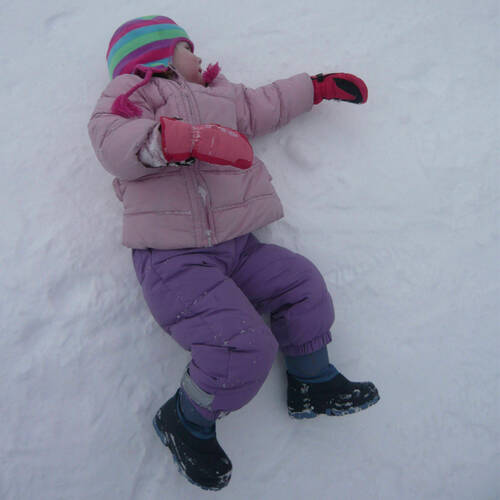
Layering videos
Layering is crucial when dressing for the outdoors - these videos explain how to do it.
Read More about Layering videosIt's not always obvious what the best outdoor clothing is to support effective outdoor play and learning. In this guide we look at the various elements of clothing required, with a focus on layering.
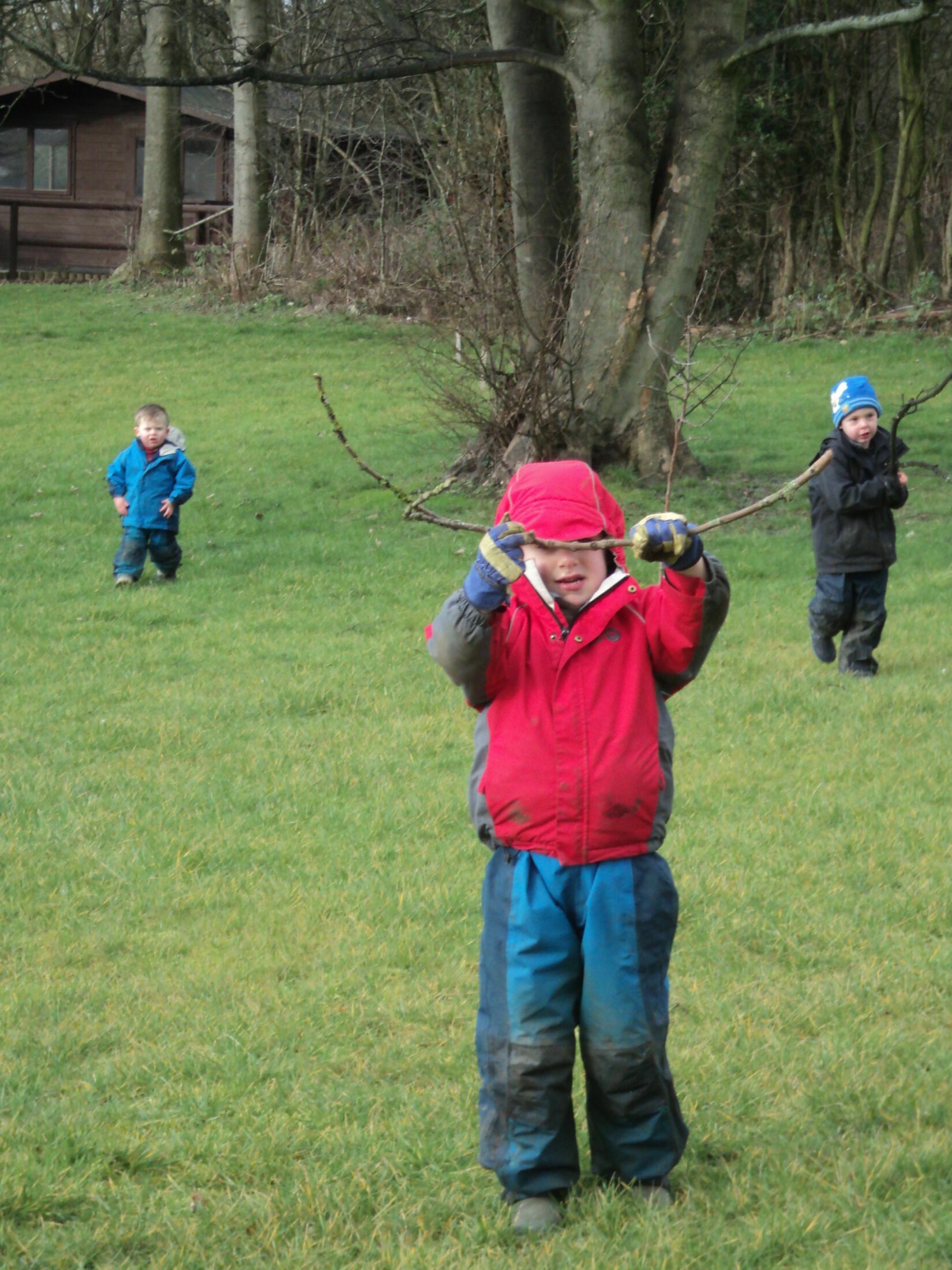
Layering means wearing a number of different layers of clothing, rather than one or two bulky items.
Frequently children have too many or too bulky clothes on, which prevents them from moving easily and detracts from their ability to participate in outdoor activities. Getting the layers of clothing right really enables children to access their outdoor provision.
We recommend the following layers as the most effective way of dressing for extended time outdoors:
We'll look at each layer in detail below.
The base layer is the layer closest to your skin. If you are very active and get hot and sweaty, the base layer becomes very important. The base layer needs to fit snugly and retain some insulating properties.
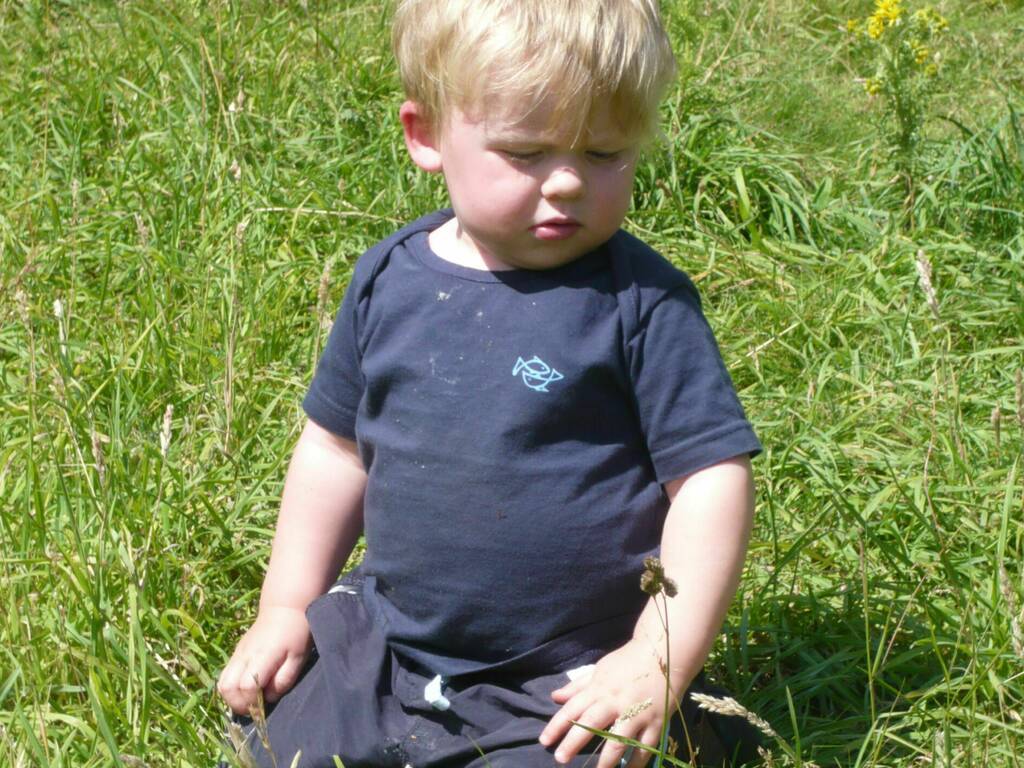
It is not practical to expect children to have a specialist base layer.
Most children will wear school shirts, cotton t-shirts or long sleeve t-shirts and maybe vests. Cotton is an effective base layer unless it gets wet.
Group leaders, therefore, need to be aware of children becoming too hot and sweaty, so leaders can prevent the individual child becoming damp and getting cold as the moisture evaporates once the activity stops.
As a leader you will soon get to know your group outdoors and start to recognize the children who are more active or who sweat more easily. Removing layers before becoming too hot will avoid the base layer becoming sweaty and wet.
When buying a base layer, ideally avoid cotton, as it retains moisture and will remain damp next to the skin.
An ideal base layer is made from synthetic fabric or wool. Synthetic layers such as polyester or polypropylene tend to be less expensive than wool, are often tougher, dry quickly and do not itch.
Synthetic base layers, however, can become odorous and have a detrimental environmental effect. Wool, which is now more popular as a base layer, continues to insulate even when it is wet. Merino wool is particularly good and is lightweight and less itchy than traditional wools.
Who | For children | For adults |
What | Close-fitting T-shirt or Very thin long sleeve T-shirt Vest, tights or leggings (if very cold) | Close-fitting T-shirt or Vest, tights or leggings (if very cold) |
Comments | Avoid collars and hoods – any bunching and bulk around the neck and chest can be restrictive once further layers are added. | If you want to treat yourself to a great insulating base layer then we would recommend merino wool but it can be quite expensive. |
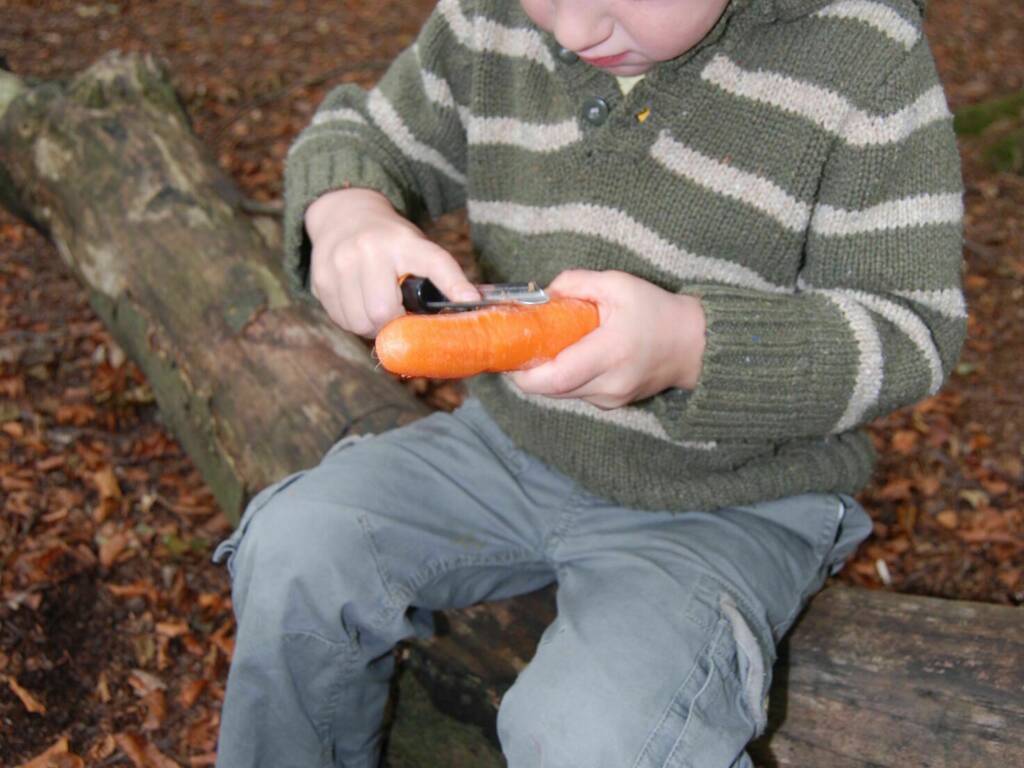
Typically a mid-layer is a fleece or wool layer. A mid-layer usually has some loft (thickness) to it to help trap the warm air, but is also breathable so it does not retain sweat.
Who | For children | For adults |
What | Close-fitting thin fleece Sweatshirt (school sweatshirt) | Close-fitting thin fleece |
Comments | Avoid hoods as they can add bulk around the neck and chest and make clothing tight and more restrictive. | Try a zip-neck or a full zip mid-layer to make it easy to regulate heat. Alternatively a sweatshirt will do just fine. |
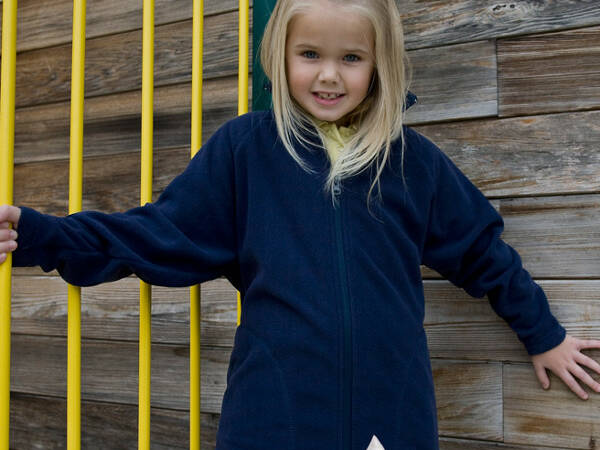
The insulation layer, whether natural, synthetic or down, provides extra loft (thickness) and therefore warmth, that is essential on very cold days.
Ideally the insulated layer needs to fit snugly over the mid layer, allowing for movement.
When the weather is dry but cold, the insulated layer can be worn without a waterproof outer layer. Material that is more breathable such as wool or fleece also allows the wind through, so it is important to have an outer windproof layer either built in or added as the outer shell layer.
Who | For children | For adults /leaders |
What | Coat Thick fleece | Down or synthetic down jacket Thick fleece |
Comments | Most children’s winter coats are a jacket system that combines an insulation layer with a shell. It is worth checking that coats are actually waterproof as they may not be. | Down has higher insulating properties but it malfunctions when wet. It also doesn’t like to be washed often. Leaders often wear jackets in dirty and damp conditions so washable, synthetic fabrics are normally the insulating layer of choice. |
The outer shell is the singularly most important layer to get right. If this is correct, then as long as you have some warm clothing underneath, irrespective of number of layers or material type, you are more likely to remain protected from the damp and cold.
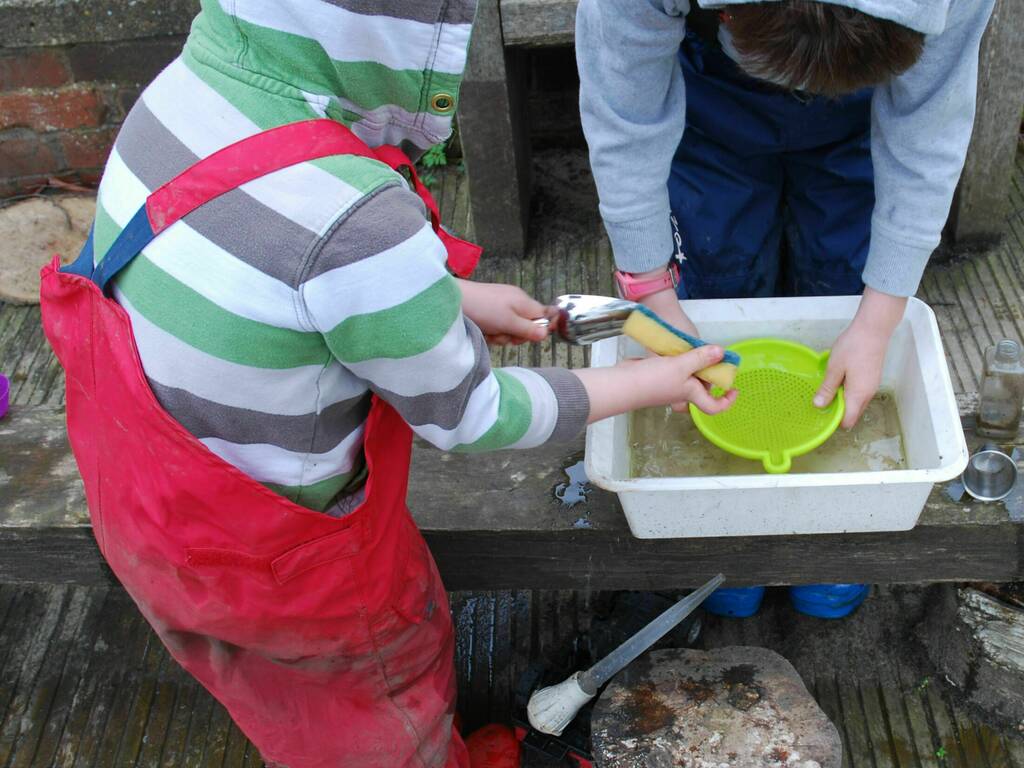
Many children do not have waterproof trousers and if they do they are often thin and not very robust. It is often necessary for settings to provide waterproofs for individuals or all of their group members.
Waterproof trousers are often worn on Forest School projects in all conditions, just to keep out the mud and damp. Waterproof coats are often only worn when it’s raining.
If you have a limited budget, invest in good trousers / dungarees as they will get the most wear. See our Buying guide for other things to consider when using your budget.
Don’t tuck your waterproof outer layer into your wellies when it rains – it channels the water into the boot.
Who | For children | For adults |
What | Waterproof trousers or dungarees Waterproof jacket | Waterproof trousers or high-waisted salopette-style trousers Waterproof jacket |
Comments | Lots of children’s coats are not waterproof; they may resist rain for a short period but over time become wet through. | Many three-in-one coats offer different layers in a single jacket that separate out. You can wear just the insulating layer or the outer layer or wear both zipped together. |
People often say that you lose most of your body heat through your head. In fact, if all parts of your body were exposed, your chest and neck would lose a lot of heat as well. The fact is, your head contains your brain, and your body will try to keep it protected by pumping warm blood to it. As your head is often the only exposed part of your body, you will lose significant amounts of heat through it.
Hats and balaclavas are effective ways to help you stay warm and can be easily removed and stored if a person becomes too warm. Most children will have their own hats, however, you need to watch out for poorly insulating hats, particularly if a child may be prone to feeling cold.
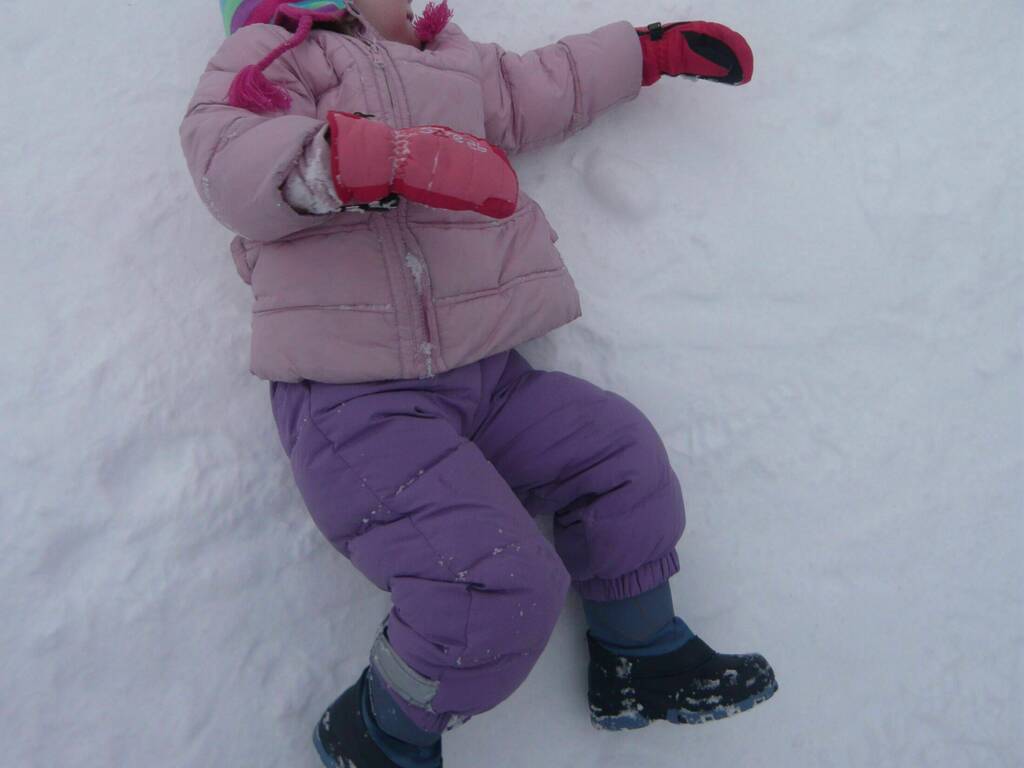
Putting gloves on small children’s hands can be very time-consuming. Mittens are often a lot easier to put on, and mittens tend to be warmer than gloves made of the same material because fingers maintain their heat better when they are in contact with each other. Gloves increase the surface area of material in contact with the outside air, which leads to increased heat loss.
Wool gloves and mittens can quickly become wet and cold. If possible, source fleece-lined waterproof ones that aren’t too bulky.
To keep feet warm wear wool, man-made fibre or fleece socks. Cotton socks will hold moisture and, once damp or wet, retain the cold.
If you are wearing thick socks or two pairs of socks, make sure your boots are not too tight. Pressure, particularly to the top of the foot, can reduce the blood supply and contribute to the wearer feeling cold.
Socks need to be pulled up and not bunched inside the boot as that will make them uncomfortable. To help prevent socks riding down into your boots, make sure they are long enough to tuck trousers into, this will help hold them up. It will also prevent the bottom of your trousers falling out of the boot and getting wet.
It is important that feet do not get wet. To help prevent feet getting wet in the snow consider gaiters or snow baffles on your trousers.
Feet can get wet by:

Layering videos
Layering is crucial when dressing for the outdoors - these videos explain how to do it.
Read More about Layering videos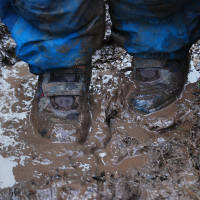
How to get ready
For many group leaders, putting outdoor clothing on, particularly with young groups, can be quite an arduous task. This section offers some suggestions on how to get your group organised and outside more easily and speedily.
Read More about How to get ready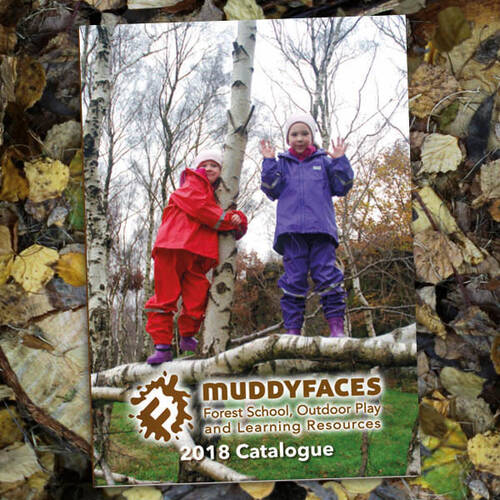
Outdoor clothing buying guide
Muddy Faces developed this guide to give practitioners honest practical information to help make sure their budgets for outdoor clothing are spent in the most effective way.

There is no such thing as poor weather. Our enjoyment of the outdoors relies on good quality clothing and an effective clothing policy. Take a look through this section to find outdoor play and Forest School clothing for early years, children, youth and adults.
For more information about outdoor clothing explore the Outdoor Clothing section of the OUTDOOR HUB. You'll find information about layering, waterproof ratings, care and buying guides and much more.